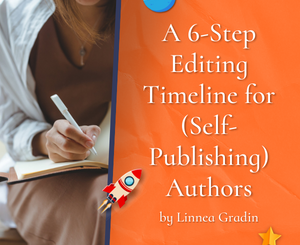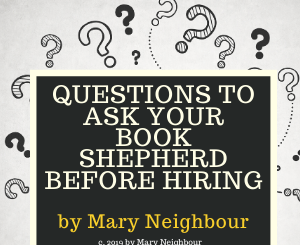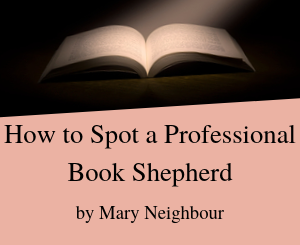What is Typesetting? by Joylynn M. Ross
 Today we welcome a new guest writer to Writer’s Fun Zone, Joylynn M. Ross who is stopping by to chat with us about “What is Typesetting?” Enjoy!
Today we welcome a new guest writer to Writer’s Fun Zone, Joylynn M. Ross who is stopping by to chat with us about “What is Typesetting?” Enjoy!
***
When asked what advice I have for writers and authors—not only aspiring, but advice for writers and authors in general—I always say, “Learn the business of writing and publishing before diving into the literary industry.”
I’m not saying learn the business before writing. By all means, write whatever is flowing through your spirit when it’s flowing.
You should also learn (simultaneously while writing or after finishing the final draft—before publishing, though) how to share your work with the world in excellence (as opposed to mediocre). As I once saw on a social media post, “Mediocracy is the enemy of excellence.”
As the attendees of the annual Path To Publishing “Act Like an Author, Think Like a Business” Conference learn, there are five aspects of publishing.
Book Design: Typesetting
One of those aspects is Design. Part of the design process is the interior design/layout of a book, AKA typesetting.
Typesetting should not be confused with formatting a Word Doc to industry standard—that is the author’s job. As a matter of fact, before an author even types the first word in their manuscript, their document should be formatted to industry standard, which is as follows:
- One-sided
- Double-spaced
- Times New Roman 12-point font
- One-inch margins all around (top, bottom, left, right)
- First line 0.5 indention at the beginning of each new paragraph
- No extra lines between paragraphs
Not having your Word Doc in industry standard format can cause one of two things (or perhaps both):
- An extra fee for the typesetter to get your document into a condition that is even typeset-able (Not sure if that’s a word, but you get my drift.)
- Excessive typesetting formatting issues – due to your quirky and funky Word Doc formatting – hitting unnecessary returns, hitting the spacebar five times instead of setting an automatic 0.5 indention, etc.
So, there is you, the author, who formats your manuscript in the Word Doc it was typed in – preferably before you start typing, but you can always do a Control A, highlight the entire document, and then set the formatting to industry standard for a manuscript you’ve already started working on.
What’s Involved in Typesetting
Then there is the typesetter who, again, takes the content from that Word Doc, places it in a typesetting program, and then formats it into a final typeset PDF for you to share with your printer.
For the most part, a typesetter will arrange the interior layout of your book. See a general definition below of what typesetting is that I found in a Reedsy blog post.
Typesetting is the process of setting text onto a page. In this stage, which occurs toward the end of book production, the typesetter arranges the book’s interior to create the best reading experience. He or she will, among other things:
- Determine the size of the margins,
- Style the chapter starts, and
- Pick the right font typeface and size for the content.
Will the typesetter add page breaks for each new chapter?
Yes. But again, this is something you as the author could (and probably should) place in your manuscript every time you start a new chapter.
Can you give a typesetter a wacky formatted Word Doc and say, “Typeset it?”
Sure.
Will it possibly cost you more and you run the risk of not having the best interior design possible?
Absolutely! We say our books are our babies. Well, tidy that baby up as much as possible before putting it in someone else’s care.
Prepare Your Manuscript for the Typesetting Process
What I’m sharing with you are ways you as an author can better prepare your manuscript for the typesetting process.
Having the most polished manuscript possible (with both editing and Word Doc formatting) before turning it over to an industry professional makes for the best results – and can save you money, as the more work an editor or typesetter has to do, the more it will cost you . . . as both an editor and typesetter will charge extra if heavy editing or advanced typesetting is required.
I think it’s worth repeating that while working in your manuscript (before giving it to your editor or a typesetter), it should be formatted according to industry standard.
If you didn’t do this during the writing process, your editor should address this issue with you during the editing phase. That way, by the time you get to the typesetting process, you should be good to go.
Things not included in the Typesetting Process
Now that I’ve shared with you some things included in the typesetting process, allow me to share some things that are not.
Paragraph Breaks
The typesetter will not read your book and try to figure out where a paragraph ends and a new paragraph begins.
So, if your book doesn’t have an indention every time a new paragraph begins, I advise you to go back and insert the indentions prior to sending the book to the typesetter.
As a rule of thumb, a paragraph should only be around five sentences long. Very long paragraphs can be an eyesore for some readers and may cause them to skim the pages, possibly missing some very important details of your book.
Front and Back Book Matter
What’s also not included in typesetting is adding title pages (half or full), copyright pages, dedication, acknowledgments: the front and back book matter.
The typesetter is going to typeset only the pages you have delivered in the complete manuscript.
As the author, you should include all your front and back book matter before sending it to the editor, so that it can be edited.
Note: Front and back book matter (dedication page, about the author page, glossary, etc.) should not be confused with the front and back of a book cover.
Copyright Page
A typesetter will not edit the book, unless your typesetter happens to be your editor as well, and you’ve paid them to edit the book. This includes the copyright page. That is something the author and their editor should work on together.
For example, the typesetter more than likely has no idea what country the book is being printed in, so they wouldn’t be able to add that to your copyright page if it’s missing. It’s not optional to add the country a book is being printed in on the copyright page, it’s a must for customs purposes.
Typesetting is only about Book Layout
The typesetter’s job is not to care about the content of your book aside from a beautiful and crisp layout. So, make sure you have worked with your beta readers and/or editor prior to sending your book to the typesetter.
I hope I’ve been able to break down the role and tasks of the typesetter and what the typesetting process involves versus pre-typesetting tasks for the author and editor. I’m sure this will help you on the future projects you create.
Next Steps
For an even more in-depth lesson on typesetting, be sure to register for the “Act Like an Author, Think Like a Business” 2021 conference to take part in our breakout session, “Judging a Book by its Interior: Typesetting Design Tips.”
Happy writing . . . and publishing. Because remember, your publishing success is just as important as your writing success!
P.S. And just to save you a little bit of time, there is no need to add page numbers in your Word Doc to your table of contents. The typesetter will do that once the manuscript has been properly formatted for print. Keep in mind the page count for a Word Doc won’t be the same for a typeset PDF.02
***
ABOUT THE AUTHOR
 Joylynn M. Ross is the CEO and founder of Path To Publishing, a full-service literary and author assistance company. She’s also the author of Act Like an Author, Think Like a Business: Ways to Achieve Financial Literary Success. You can learn more about Path To Publishing by visiting www.pathtopublishing.com. For a free intro to self-publishing course taught by Joylynn herself, visit www.joylynnMross.com.
Joylynn M. Ross is the CEO and founder of Path To Publishing, a full-service literary and author assistance company. She’s also the author of Act Like an Author, Think Like a Business: Ways to Achieve Financial Literary Success. You can learn more about Path To Publishing by visiting www.pathtopublishing.com. For a free intro to self-publishing course taught by Joylynn herself, visit www.joylynnMross.com.







Thank you for this opportunity to share my insights on typesetting on your platform. Happy writing and publishing to all!
We appreciate your insight and expertise, Joylynn!